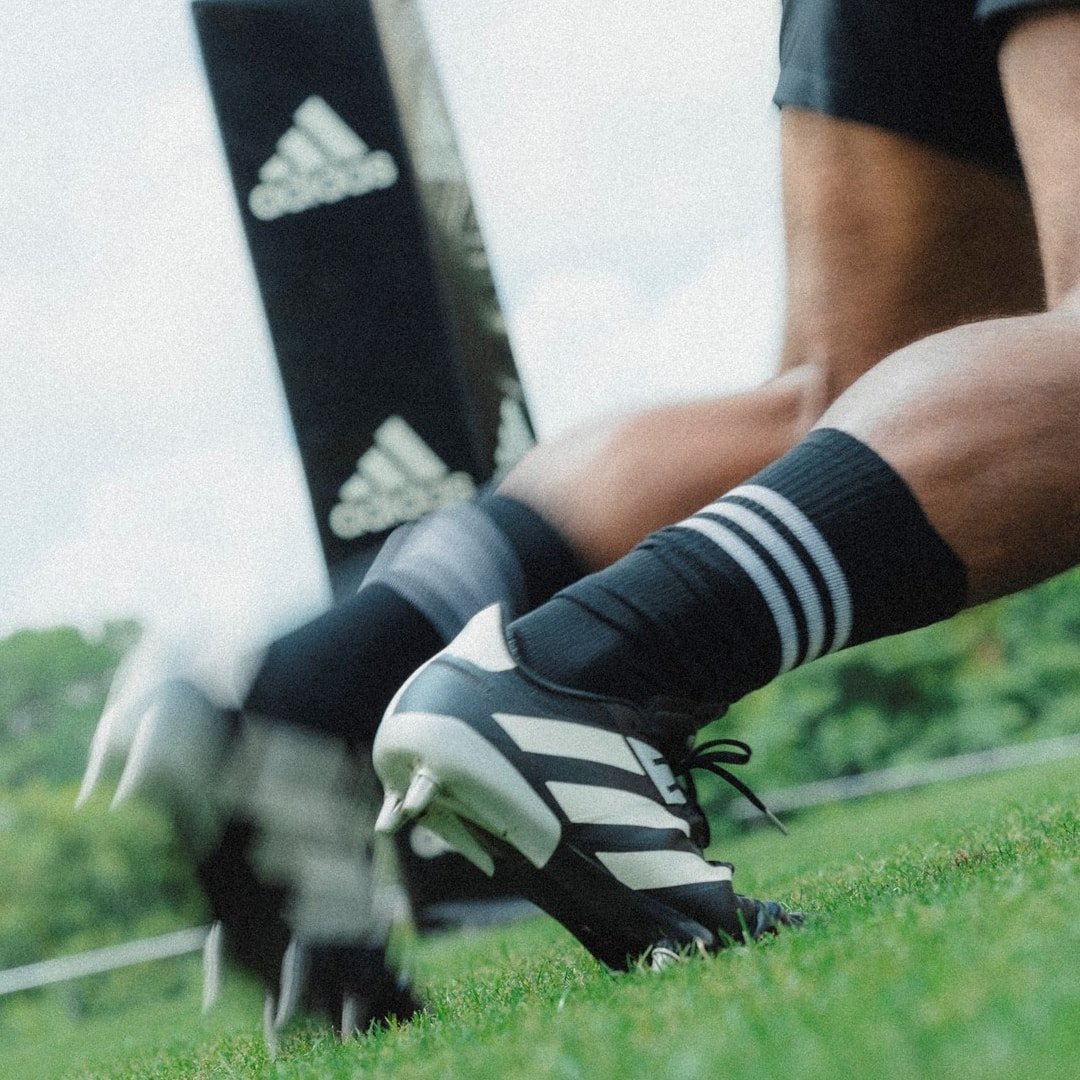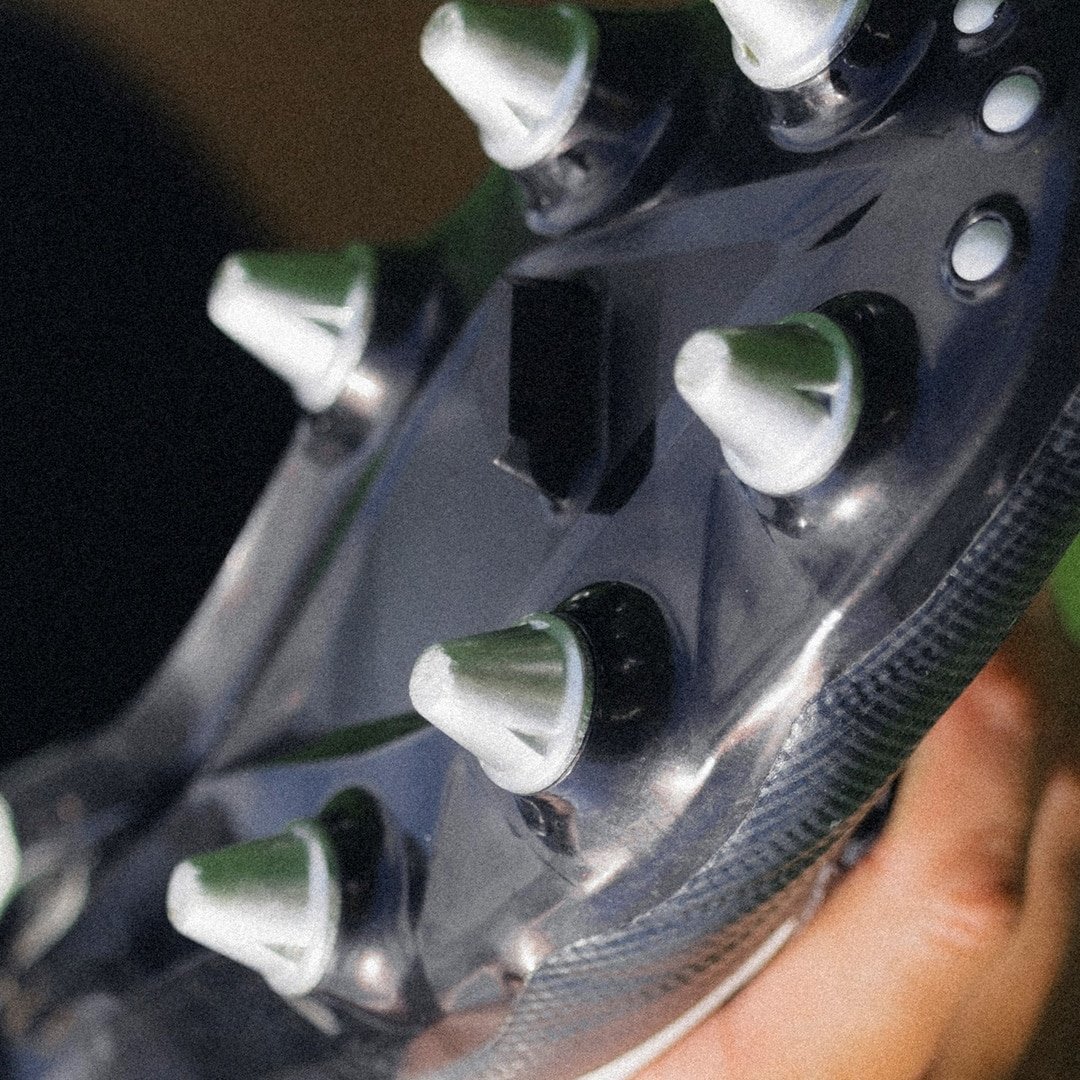Welcome to the ultimate resource for Rugby Boots. Whether you play Rugby Union or Rugby League, your choice of boots is crucial for your performance, comfort, and safety on the field.


Rugby boots today come in all shapes and styles—whether you’re a forward who prefers the classic high-cut feel or a back looking for something lightweight and football-inspired to boost your speed. Big names like Nike, adidas, and Puma are everywhere, but you’ve still got dedicated rugby brands like Canterbury and Gilbert holding strong, and Mizuno has really carved out a niche, especially in the fast-paced world of sevens.
On this page, we dive into:
- A brief history of rugby boots
- How to choose the right pair for your position and playing style
- In-depth reviews of leading brands; Nike, adidas, Puma, Canterbury & Gilbert
How to Choose Boots For Rugby
Before exploring brands, it’s critical to understand how to choose your rugby boots.
- Position: When I’ve played up front, I always looked for boots with solid ankle support—something that could handle the pressure of scrums and all that close-contact stuff. But when you’re out in the backs, it’s a different game. You want something lighter, more flexible, so you can really move—cut, sprint, sidestep. It all depends on where you’re playing and what feels right for you, often in the backs, you can use just a simple pair of football boots, forwards often require something more rugby specific.
- Fit: You’ll want a snug fit to keep your feet secure, especially when making quick side steps or sharp turns. But trust me—if they’re too tight, you’ll be dealing with blisters in no time, and that’s the last thing you need on game day.
- Weight: If you’re all about speed, lightweight boots can really help you stay quick on your feet. But if you’re in the thick of the action and need that extra protection and support, especially in tackles, a slightly heavier pair might be the better call. I truly believe it’s all about finding what works best for your game.
- Stud Configuration: When I’m playing on a wet, muddy pitch, I go for those metal soft ground studs—they give way better grip. But on dry, firm ground, I’m better off with the moulded plastic firm ground studs so I’m not slipping or sinking into the turf. It makes a big difference for me, the wetter the pitch the longer a metal stud you will need, at least in the pack, for more traction in scrums, rucks & mauls.
- Durability: Think about how often you’re actually playing and what you’re willing to spend. If you’re out on the pitch a lot, it might be worth investing in a higher-quality pair—they usually last longer and feel better overall. But if you’re just playing casually or now and then, a more budget-friendly option could still do the job just fine.
Different boots for different positions
Traditional rugby boots are very similar to football boots, but the thing that makes them different is a high cut designed to give extra support to the ankle and the longer studs. However, more and more players prefer to use football style boots, especially backs, who favour the low cut for extra mobility. So it’s important to understand what position you’re playing before choosing what kind of rugby boot you want.
It’s important to understand the shape of your feet and your running style. Find out whether you’re flat-footed or have a high arch. Ideally rugby boots will fit snugly, although if your feet are still growing it’s advisable to allow a little bit of room. Personally, I have relatively wide feet, so I need rugby boots that have either a wide last or have a relaxed fit/upper that stretches nicely. And I usually play at the back—a lightweight pair definitely suits me more.
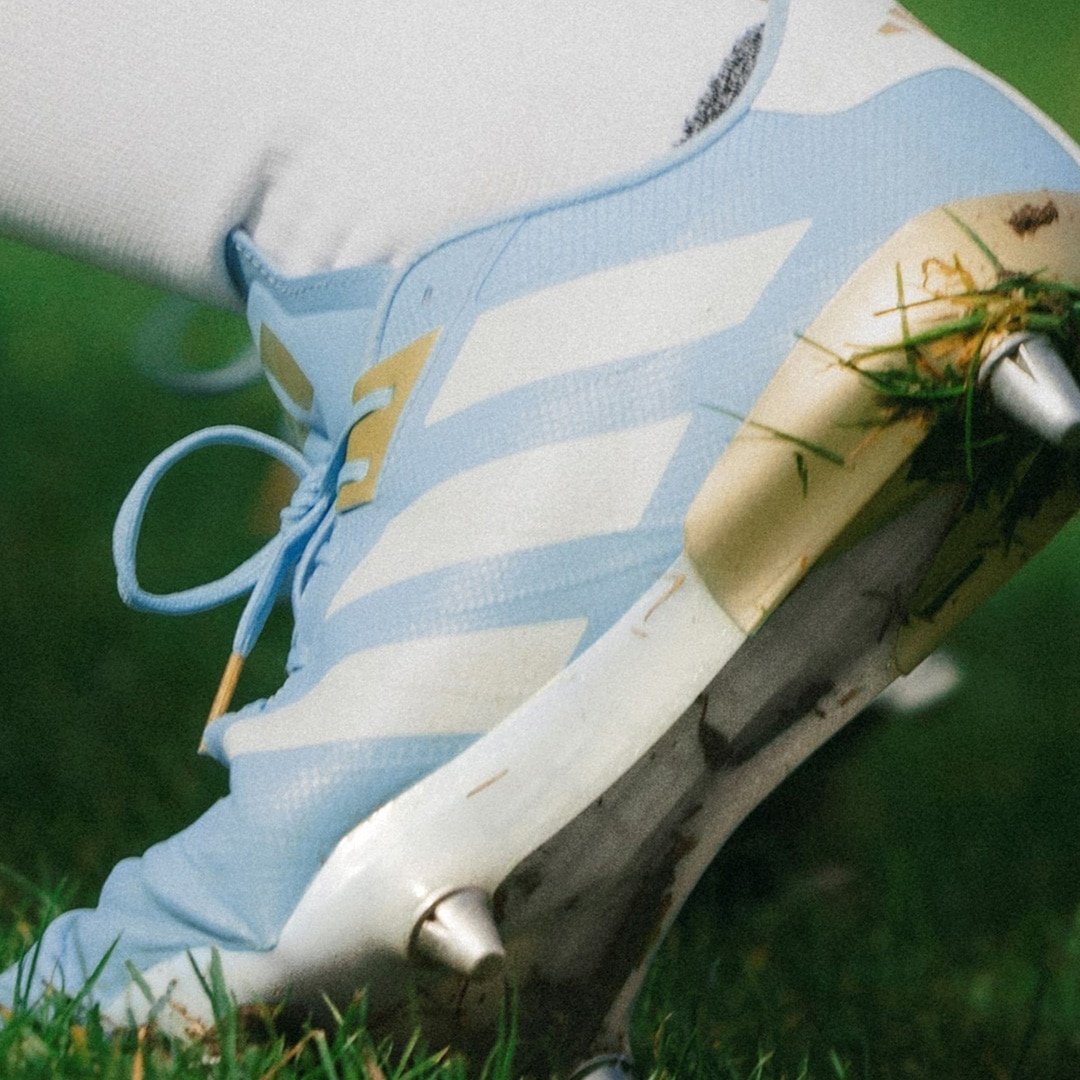

Different players prefer different fits. As forwards rely on lower body strength for power in scrums, they need extra support around the ankle to help prevent foot injuries so go for a high ankle cut for extra support in scrums. Though I think it must be said these are harder to come by with the latest boots being more for style and developments of football boots, meaning more and more silos are going for a lower cut, that means you have to get a rugby style boot and perhaps go with a rugby boot brand.
When kickers a tight-fitting boot can give you a better feel for the ball, which you can combine with a football style low cut boot for mobility, some boots like the adidas Predator have extra technology laid onto the boot for increased power for kicks or a sweet spot. Be more concerned with finding boots that fit you than those which look the flashiest, as you will stand out because of your ability rather than the boots you are wearing.
Nike Rugby Boots & Why Players Wear Them
Nike might be known mainly for football boots, but honestly, a lot of their models work really well for rugby too—especially if you’re a back or a more mobile player who’s all about speed and agility. I’ve seen (and worn) a few myself that feel amazing on the pitch. Their boots usually come with:
- Lightweight synthetic uppers that make quick footwork feel effortless.
- Flyknit tech that gives you that snug, sock-like fit—it really locks you in.
- Aggressive stud patterns that help with sharp cuts and bursts of pace.
They’re super popular with wingers, centres, and full-backs who want that explosive traction and lightweight feel. And honestly, you’ll see loads of players rocking them—some because they’ve got brand deals and get hooked up by Nike, but plenty just buy them on their own because they’re easy to find and perform really well.
Nike Mercurial are designed for straight line speed, the Vapor is one of the most popular boots, whilst the Tiempo has in the past seen a lot of rugby player favour them, they are a now a synthetic rather than natural leather boot, finally the Phantom which is more focused to football & doesn’t really suit rugby players, I don’t recall seeing many players in these, the soleplate designed for rotational traction doesn’t help here.
adidas Rugby Boots
adidas & Rugby: A Longstanding Partnership
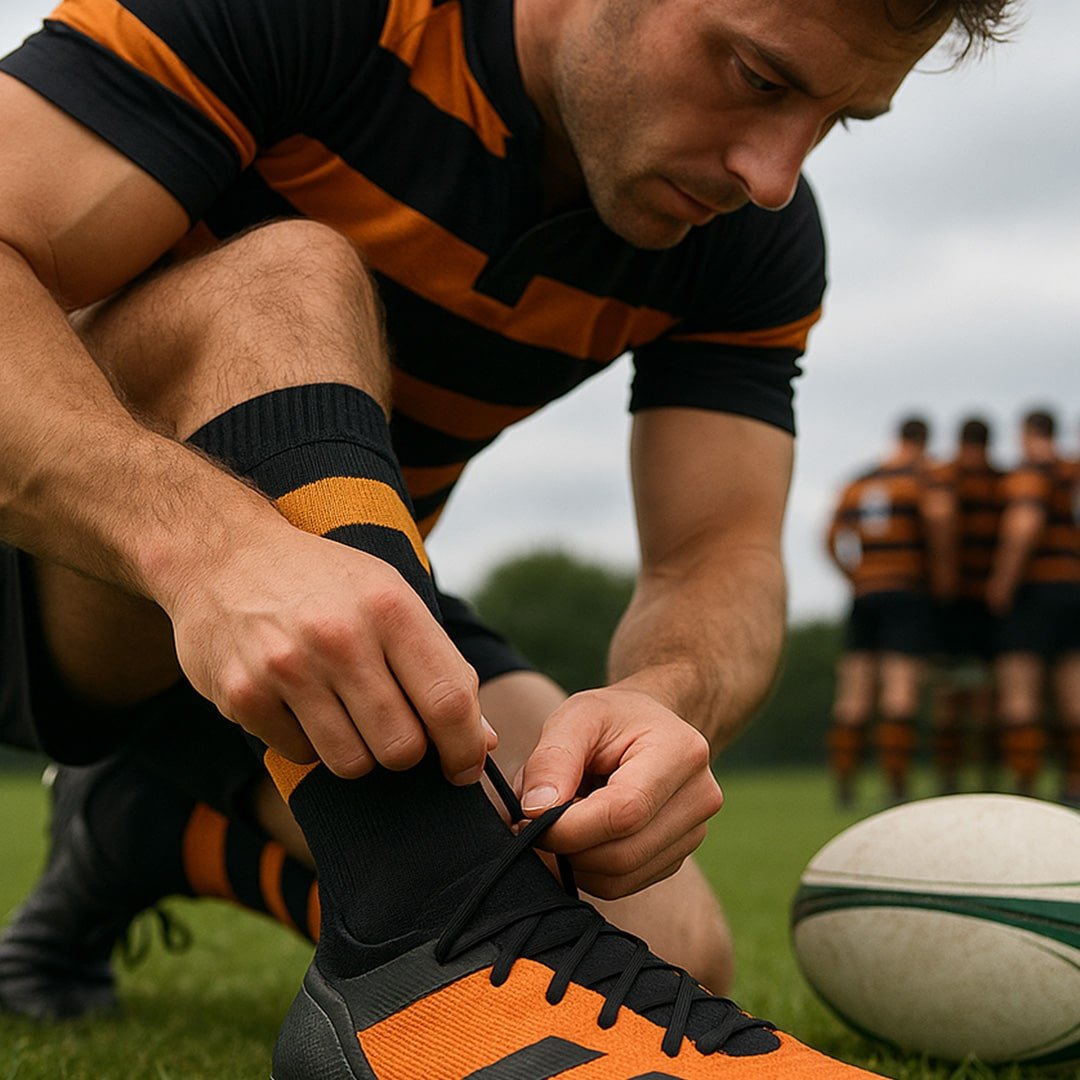
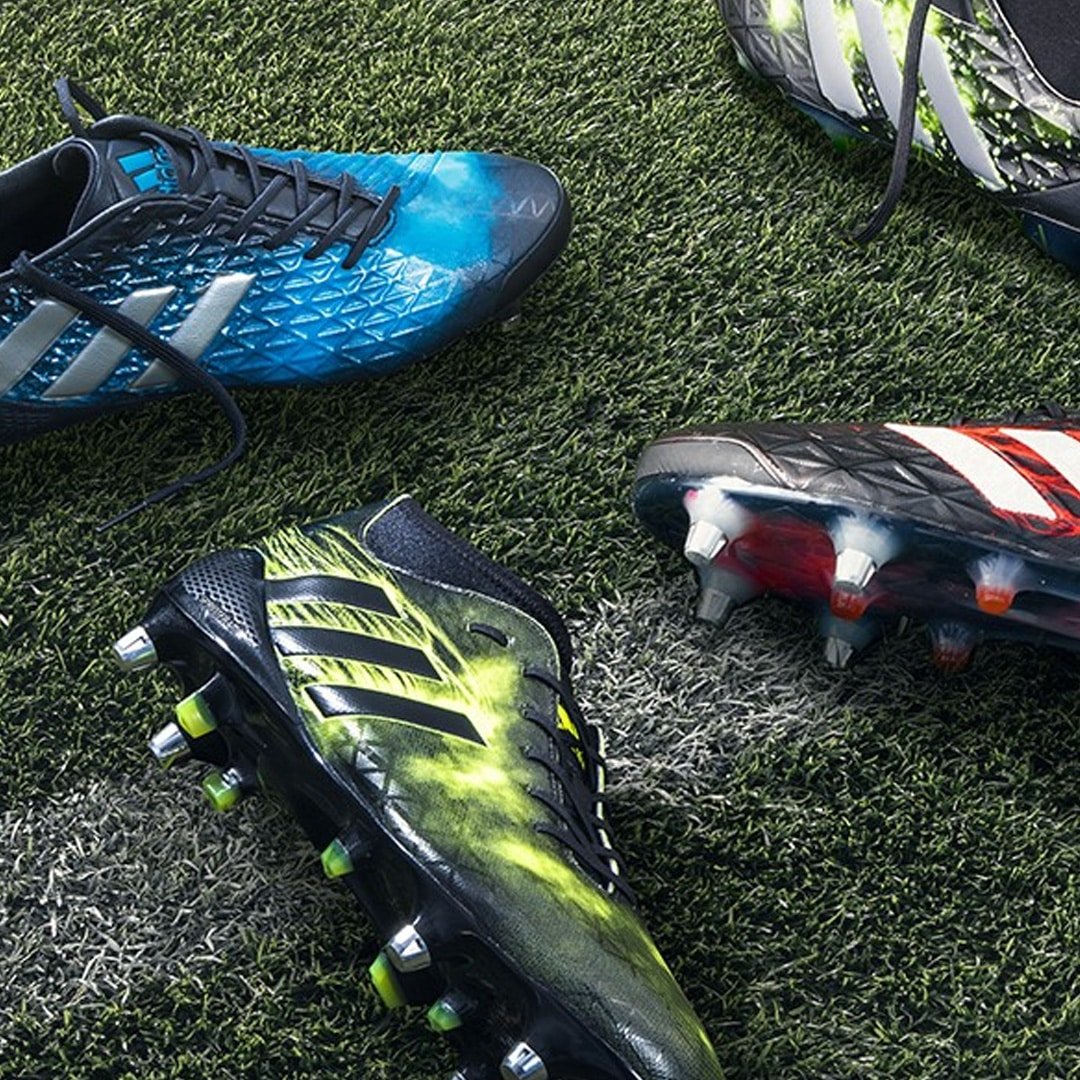
Adidas has really cemented itself as a go-to brand for serious rugby players—and for good reason. Unlike a lot of other brands that just tweak football boots for rugby, adidas actually designs boots specifically for the game’s unique demands, which is something I really appreciate. Many of their boots are designed with:
- Reinforced uppers that hold up in scrums and rucks (because let’s be real, those take a toll on your boots), and built for different models based on your position. If you’re a forward, you’ll find sturdier, more supportive boots to keep you stable in close contact. And if you’re a back like me—or someone who likes to stay light on their feet—they’ve got flexible, lightweight options that won’t hold you back.
- Tech that is seriously impressive too. The Predator zones? Great for improving your kicking game. Their stud patterns give you that extra grip when taking off or changing direction, and the synthetic uppers strike a nice balance between agility and protection.
As such, I have observed that adidas is a go-to for many professional players seeking boots built for rugby-specific demands. Whether you’re locking heads in the scrum or burning down the wing, adidas has a boot that’ll suit your style—and that’s why you’ll see so many pros sticking with them.
Puma Rugby Boots
Puma’s presence in rugby has really grown lately, especially among backs and players who rely on speed. What I like about their boots is that:
- They’re lightweight, taking a lot of cues from football boot designs, which makes them great for quick movers.
- They strike a nice balance between speed and durability—so you’re not sacrificing toughness for agility.
- Plus, Puma often offers high-performance boots at prices that won’t break the bank.
A lot of players I know go for Puma when they want something that looks sharp on the pitch but also helps them stay quick and agile.
Canterbury Rugby Boots
Canterbury is one of those classic rugby brands everyone knows and trusts. What I really respect about them is how they focus purely on rugby—no compromises:
- Their boots are built tough, with strong construction made to handle all the heavy forward play.
- They also offer wider fits, which is great because rugby players often need that extra room compared to regular football boots.
- They use durable synthetic materials that can take a beating in those intense, high-contact moments.
If you’re someone who values reliability and wants boots that can stand up to the hard stuff, Canterbury’s probably going to be right up your alley.
Mizuno Rugby Boots
Rising Popularity in Rugby Sevens and Speed Players
Mizuno might be better known for athletics and football, but they’ve definitely been making waves in rugby too—especially in Sevens. What stands out about their boots is:
- How lightweight and high-quality they feel, whether they’re rocking synthetic or leather uppers.
- The fit is just spot-on, offering great comfort that really makes a difference when you’re moving fast.
- Their stud configurations are clearly designed with explosive acceleration in mind, helping players get those quick bursts off the mark.
If speed and precision are your priorities, it’s no surprise that a lot of players swear by Mizuno boots.
Asics Rugby Boots
Asics has built a solid reputation for comfort and stability across all kinds of sports, and their rugby boots definitely carry that forward:
- They pack in gel cushioning systems that really help absorb shocks, which is a game-changer when you’re hitting the ground hard or getting into heavy contact.
- Whether you’re a forward or a back, Asics boots offer reliable grip and strong build quality that can handle the rough stuff.
- They tend to attract players who want that extra comfort and support underfoot—because let’s face it, rugby’s tough on your feet.
Having All Blacks star Richie Mo’unga as an ambassador says a lot; he’s featured in several ASICS campaigns, like the Movement Coach program and the Menace Challenge, where they highlight his killer kicking skills and training routines in their promotional content and blog features.. It’s clear Asics is serious about performance and comfort on the pitch.
Under Armour Rugby Boots
Under Armour really knows how to blend modern performance with bold, eye-catching designs. Plus:
- Their boots are super lightweight, which makes them perfect if you’re playing in a speed-focused position and need to stay quick on your feet.
- They also come with unique soleplate designs that help with traction, so you can make those sharp cuts and fast moves without slipping.
While they might not be as rugby-specific as some other brands, Under Armour boots still deliver versatile performance that works well for backs and mobile forwards alike. If you’re after something that looks fresh and performs solidly, they’re definitely worth checking out.
History of Rugby Boots
The original football boot first comes into records with Henry VIII in 1526 when he called for a pair of leather football boots. However the man in the street would not yet have had this pleasure as both football and rugby boots did not exist in the early days. In the late 1800’s players were usually wearing walking, working boots or hobnail boots, which would either come with nails or studs protruding. The sports split into their distinctive games of rugby and soccer and at this time also allowed hacking a players legs as a method of stopping them, so some boots would also have had metal tips to inflict more pain.

In 1889 a law change barred the wearing of projecting nails or iron plates, in 1910 further improvements to enhance safety came when changes specified a cylindrical stud no less than 3/4 inch in diameter and no longer than half the diameter long fixed to the sole by 4 nails. The next change occurred in 1926 when studs had to be leather, circular and fixed by at least 3 nails. Rubber was included in 1948, aluminium in 1953 and approved plastics in 1954. Currently rugby requires an approved rugby boot with studs that carry the IRB marking which can be used for both rugby league and rugby union.
Milestones in rugby boot development:
- 1889: Laws banned projecting nails or iron plates for player safety.
- 1910: Studs required to be cylindrical, no smaller than ¾ inch in diameter.
- 1926: Studs had to be leather and circular.
- 1948-1954: Introduction of rubber, aluminum, and approved plastics.
- Modern day: All rugby boots must carry IRB-approved markings for safety in both Union and League.
Traditional rugby boots were high-cut for ankle support, but many players today, especially backs, prefer low-cut football-style boots for added mobility.
Rugby Studs
Boots with screw-in studs are pretty popular because they let you swap out studs depending on the pitch conditions—super handy, right? If the ground’s muddy, you’ll want longer studs to keep your footing solid, but on a dry day, shorter studs usually do the trick. And when the pitch is hard, lots of players go for moulded rubber studs instead. But here’s the thing: rugby’s a full-contact sport, so wearing the wrong studs isn’t just uncomfortable—it can actually hurt you or someone else out there. Referees do check for sharp edges or rough bits on your boots, but honestly, it’s on you to keep your gear in good shape and make sure everything’s safe before you hit the pitch.
